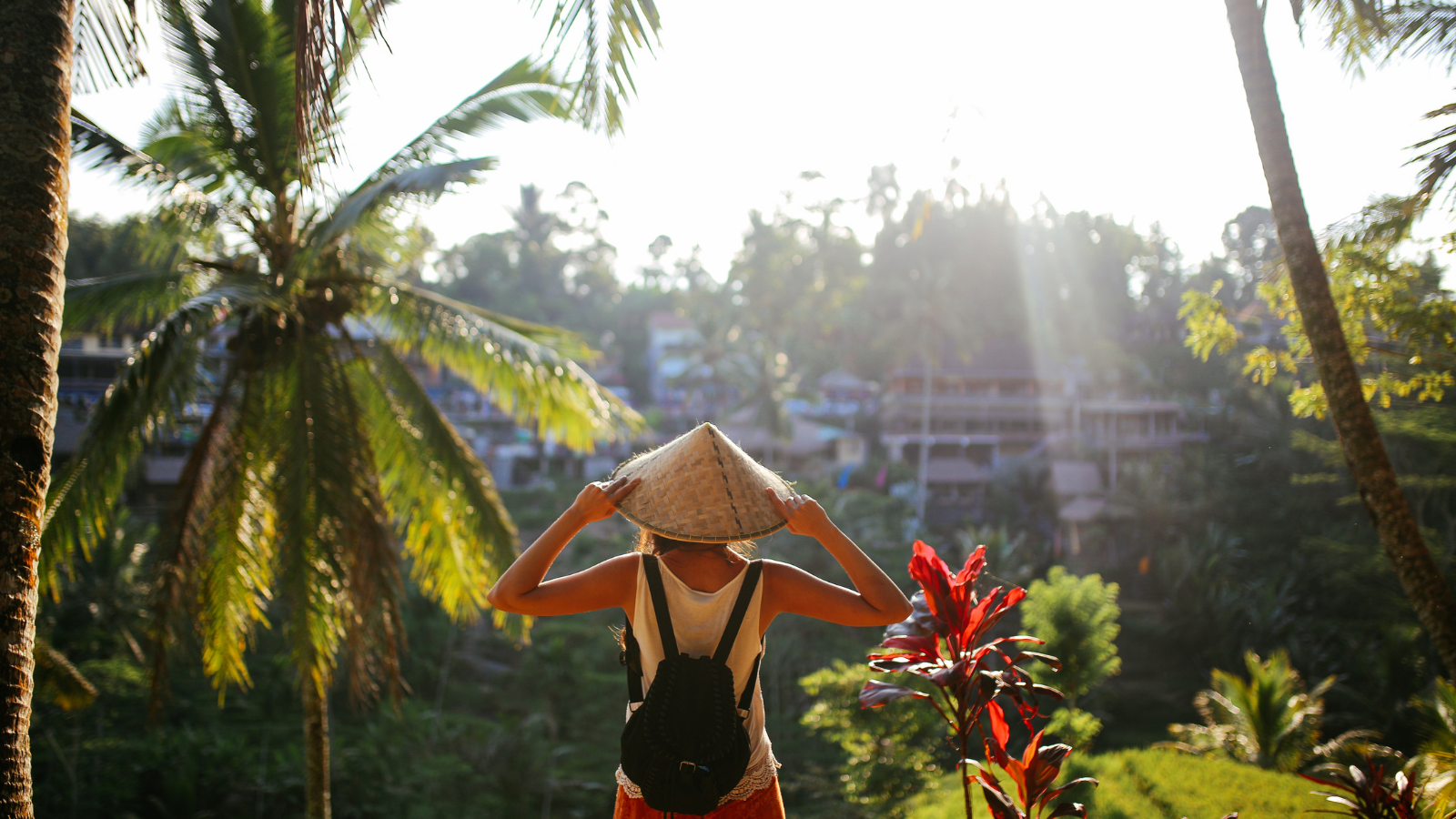
How to Explore the Best of Indonesia: A Complete Guide
Indonesia, an archipelago of over 17,000 islands, offers diverse landscapes, vibrant cultures, and endless adventures. From lush jungles and sacred temples to pristine beaches and volcanic mountains, Indonesia is a paradise for travelers. This guide will take you through the top places to visit, the best times to go, must-try activities, and essential tips for a memorable journey across Indonesia.
Bali – The Island of Gods:
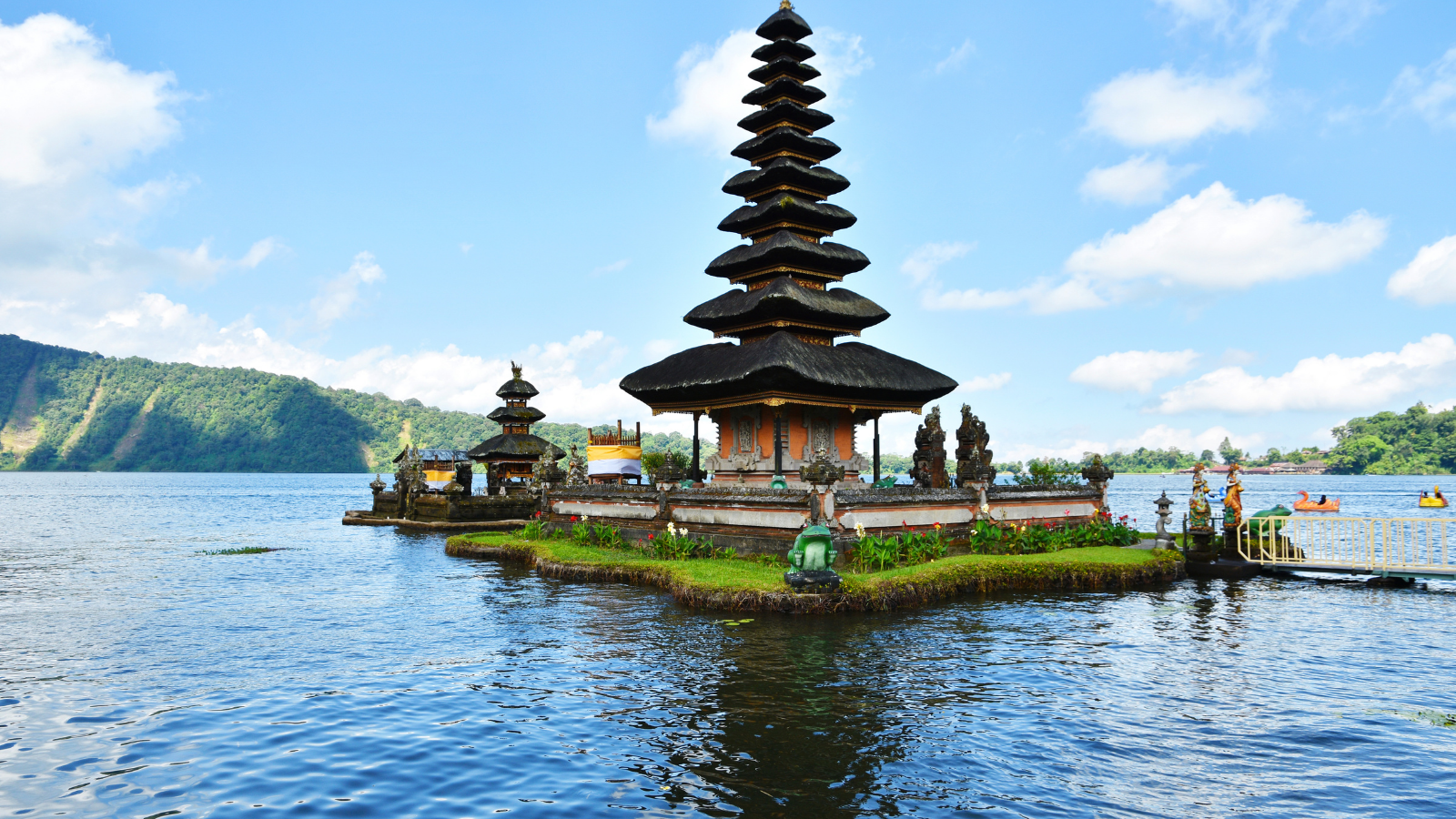
overview
Bali, often referred to as the "Island of Gods," is Indonesia’s most popular travel destination, known for its breathtaking beaches, spiritual culture, vibrant nightlife, and lush landscapes. With its unique blend of relaxation, adventure, and cultural richness, Bali appeals to a wide variety of travelers. This island is not only famous for its natural beauty but also for its thriving arts scene, traditional Balinese Hindu culture, and welcoming locals. Bali offers everything from serene retreats in the hills of Ubud to the lively beach scenes of Kuta and Seminyak, making it a versatile destination for Indian tourists. Whether you’re seeking tranquil yoga retreats, adventure-filled surfing spots, or cultural temples, Bali has something for everyone.
Highlights of Bali
- Uluwatu Temple: Perched on a cliff 70 meters above the Indian Ocean, Uluwatu Temple (Pura Luhur Uluwatu) is a stunning sea temple dedicated to the spirits of the sea. The temple offers breathtaking sunset views with a dramatic ocean backdrop.
- Kecak Dance Performances: Traditional Kecak dance performances narrating tales from the Ramayana are held every evening.
- Scenic Views: Panoramic ocean views, especially beautiful at sunset.
- Tips: Arrive early for the dance show, dress modestly, and use the provided sarongs as the temple is a sacred site.
- Ubud – The Cultural Heart of Bali: Located in central Bali, Ubud is famous for its lush landscapes, terraced rice paddies, and vibrant arts scene.
- Tegalalang Rice Terraces: Ideal for nature walks and photography.
- Sacred Monkey Forest Sanctuary: A sanctuary for long-tailed macaques, dotted with ancient temples and statues.
- Ubud Art Market: Offers locally crafted souvenirs, textiles, jewelry, and artwork.
- Tips: Visit early to avoid crowds; keep belongings secure as monkeys in the sanctuary can be curious.
- Seminyak and Kuta – Beaches, Nightlife, and Surfing: Coastal towns known for their beaches, nightlife, and relaxed vibe.
- Kuta Beach: Long sandy beach, great for beginner surfers, with beach bars and sunset views.
- Seminyak Beach: Upscale beach clubs like Ku De Ta and Potato Head Beach Club offer gourmet food and drinks by the ocean.
- Shopping and Dining: Boutique shops, art galleries, and top-rated restaurants and cafes.
- Tips: For a quieter experience, try nearby beaches like Legian. Book tables at popular beach clubs in advance during peak season.
- Activities in Bali
- Surfing: Kuta Beach is ideal for beginners, while Uluwatu and Padang Padang cater to experienced surfers. Numerous surf schools offer lessons and rentals.
- Temple Visits: Top temples to visit include Uluwatu, Tanah Lot (a sea temple), and Besakih (the “Mother Temple”), each offering unique architecture and spiritual experiences.
- Yoga Retreats: Ubud is Bali’s yoga hub, with wellness retreats and studios like Yoga Barn and Radiantly Alive offering classes and holistic programs.
- Beach Lounging and Water Sports: Jimbaran Bay offers seafood dining by the beach, while Sanur Beach provides a family-friendly atmosphere. Popular water sports include snorkeling, parasailing, jet-skiing, and banana boat rides, especially at Tanjung Benoa.
- Exploring Local Markets: Ubud Art Market, Seminyak Square, and Sukawati Art Market are great for shopping handmade crafts, sarongs, jewelry, wood carvings, and paintings.
- Tips for Bargaining: Bargaining is common in local markets, so feel free to negotiate prices for souvenirs and crafts.
Java – Indonesia’s Cultural Heartland:
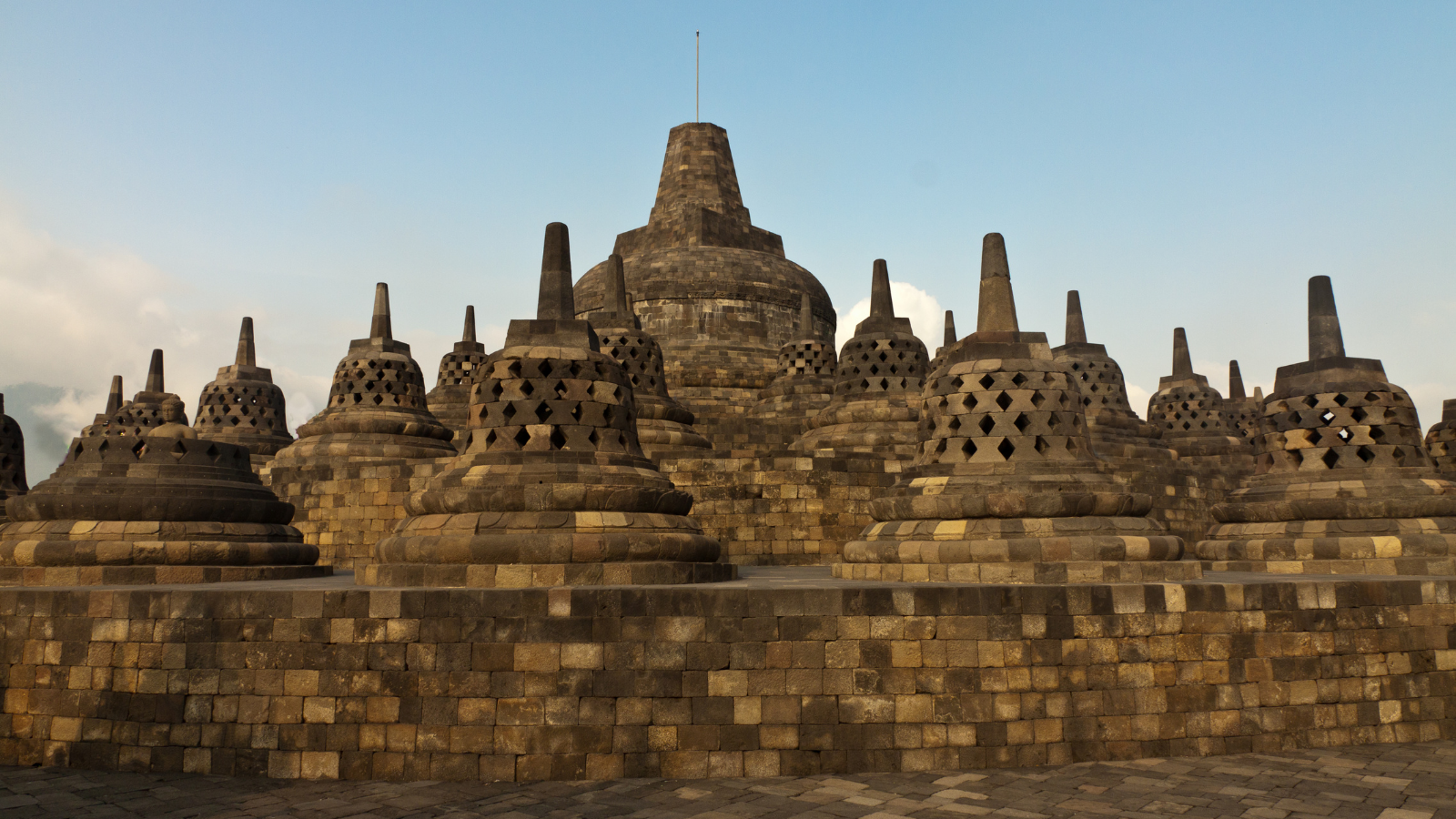
Overview
Java, the most populous island in Indonesia, is a cultural and historical hub that showcases Indonesia’s deep-rooted traditions, vibrant art, and ancient monuments. Java is home to Indonesia’s capital, Jakarta, as well as the cultural cities of Yogyakarta and Solo, the ancient temples of Borobudur and Prambanan, and active volcanoes like Mount Bromo and Mount Merapi. For Indian tourists, Java offers a unique combination of natural beauty, rich heritage, and a fascinating blend of modern and traditional lifestyles.
Highlights of Java
- Borobudur Temple
- Description: Borobudur, a UNESCO World Heritage site, is the largest Buddhist temple in the world. Built in the 8th and 9th centuries, it features nine stacked platforms topped by a central dome, surrounded by 72 stupas with Buddha statues inside.
- Highlights:
- Architecture and Carvings: The temple is famous for its intricate carvings that depict Buddhist teachings and Javanese history, with over 2,600 relief panels.
- Sunrise Experience: Watching the sunrise over Borobudur is a magical experience, as the morning mist lifts to reveal the temple and surrounding landscape.
- Tips for Tourists: Arrive early for the sunrise tour, as it’s one of the most popular experiences. Dress modestly, and wear comfortable shoes, as you’ll be climbing multiple levels of the temple.
- Mount Bromo
- Description: Mount Bromo, an active volcano in East Java, is one of the most iconic and photographed natural landmarks in Indonesia. It’s part of the Bromo Tengger Semeru National Park and is known for its stunning sunrise views and rugged landscape.
- Highlights:
- Sunrise Viewpoint: The sunrise over Mount Bromo is breathtaking, with views of neighboring volcanoes and the Sea of Sand.
- Crater Trekking: After sunrise, visitors can trek to the crater rim, either on foot or by renting a horse from the local Tenggerese people.
- Tips for Tourists: The temperatures can be quite cold in the early morning, so bring warm clothing. Book a jeep tour to access the best sunrise viewpoints and crater trek routes.
- Prambanan Temple
- Description: Prambanan is the largest Hindu temple complex in Indonesia and one of the most significant Hindu monuments in Southeast Asia. Built in the 9th century, this UNESCO World Heritage site is dedicated to the Trimurti gods: Brahma, Vishnu, and Shiva.
- Highlights:
- Architectural Marvel: The complex includes over 200 temples, with the main shrines dedicated to the Hindu deities. The intricate carvings on each temple depict scenes from the Ramayana.
- Ramayana Ballet Performance: The Prambanan complex hosts Ramayana Ballet performances, a beautiful outdoor show that tells the story of the Ramayana through dance.
- Tips for Tourists: Visit in the late afternoon to catch the sunset, and book tickets in advance if you plan to see the Ramayana Ballet.
- Yogyakarta (Jogja)
- Description: Yogyakarta, often called Jogja, is known as the cultural capital of Java. It’s a lively city filled with arts, crafts, traditional batik workshops, and historic sites, and it serves as the gateway to both Borobudur and Prambanan temples.
- Highlights:
- Kraton (Sultan’s Palace): The Kraton is the royal palace of Yogyakarta and a cultural center, showcasing Javanese art, music, and dance performances.
- Malioboro Street: This bustling street is famous for shopping, street food, and traditional crafts. Visitors can find everything from batik to souvenirs.
- Taman Sari Water Castle: A historic water palace that once served as a royal garden and bathing complex.
- Tips for Tourists: Explore Malioboro Street on foot to enjoy the vibrant atmosphere. Try the local street food, especially gudeg (a sweet jackfruit stew), a Yogyakarta specialty.
- Jakarta – Indonesia’s Bustling Capital
- Description: Jakarta, Indonesia’s capital, is a dynamic city that combines modern skyscrapers, colonial architecture, and traditional markets. Known as a melting pot of Indonesian cultures, Jakarta offers museums, shopping malls, and diverse culinary experiences.
- Highlights:
- National Monument (Monas): This 132-meter-tall monument commemorates Indonesia’s independence and offers panoramic city views from the observation deck.
- Kota Tua (Old Town): Jakarta’s Old Town features colonial buildings, historic sites, and the Fatahillah Square, where the Jakarta History Museum is located.
- Ancol Dreamland: Jakarta’s largest recreation park, featuring beaches, a theme park, and an aquarium.
- Tips for Tourists: Jakarta can be busy, so plan visits to popular spots early in the day. Explore Kota Tua for a blend of historical and cultural experiences.
Activities in Java
- Temple Tours
- Borobudur and Prambanan: These two ancient temples provide insight into Indonesia’s Buddhist and Hindu heritage. Guided tours are recommended for a deeper understanding of the sites.
- Sewu Temple: Near Prambanan, Sewu Temple is another beautiful Buddhist temple that’s less crowded but equally impressive.
- Volcano Trekking and Adventure
- Mount Bromo: Witnessing the sunrise and trekking to the crater is a must-do activity in Java.
- Mount Merapi: An active volcano near Yogyakarta, Merapi is ideal for adventure seekers who want to experience an active lava dome up close.
- Cultural Experiences in Yogyakarta
- Traditional Batik Workshops: Learn about the intricate process of batik-making and create your own batik piece at workshops in Yogyakarta.
- Gamelan Performances: Watch a gamelan orchestra performance at the Kraton in Yogyakarta, showcasing traditional Javanese music with unique instruments.
- City Exploration in Jakarta
- Shopping: Jakarta offers everything from high-end malls like Grand Indonesia to traditional markets like Pasar Baru, where you can buy handicrafts, textiles, and souvenirs.
- Culinary Tour: Try local Indonesian dishes such as nasi goreng (fried rice), sate (grilled skewers), and soto (soup) at traditional restaurants and street food stalls.
Sumatra – Untamed Nature and Wildlife:
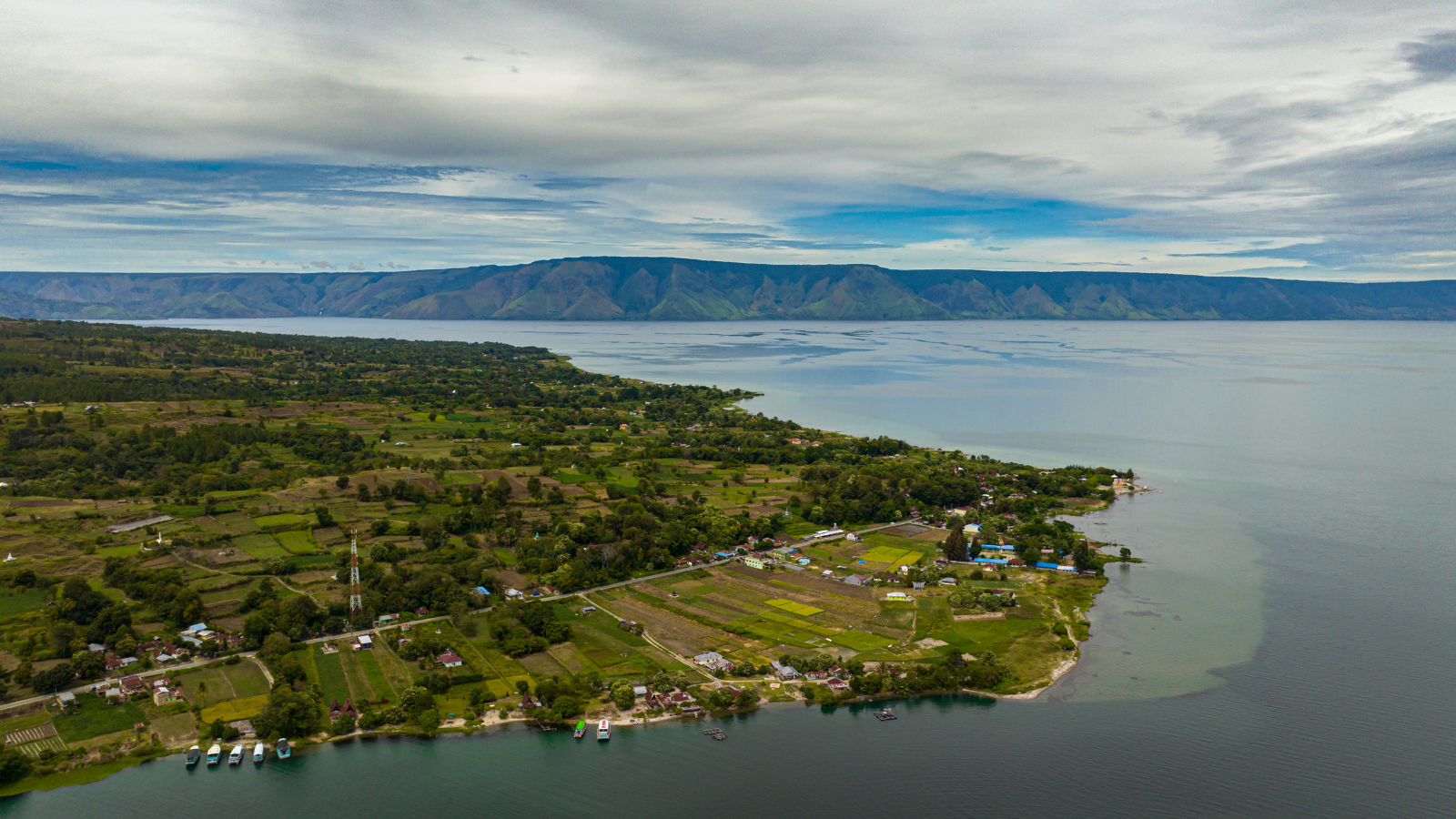
Overview
Sumatra, one of the largest islands in Indonesia, is a land of wild rainforests, diverse wildlife, and unique cultural heritage. Known for its lush landscapes and rare species like the orangutan, Sumatra offers a more off-the-beaten-path experience compared to Indonesia’s other islands. For Indian tourists looking for adventure, natural beauty, and an immersion into Indonesia’s rich biodiversity, Sumatra is the perfect destination.
- River Tubing: Relaxing tubing on the Bohorok River.
- Tips: Bring trekking shoes, insect repellent, and a camera. Use local guides for eco-friendly experiences.
- Lake Toba
- World’s largest volcanic lake with Samosir Island at its center.
- Samosir Island: Traditional Batak culture, stone tombs, and villages.
- Hot Springs: Natural hot springs near Pangururan on Samosir.
- Tips: Stay on Samosir for a full experience, rent a bike to explore, and try local Batak dishes.
- Mentawai Islands
- Remote islands off Sumatra’s west coast, known for world-class surfing and indigenous culture.
- Surfing: Popular surf spots in Siberut, Sipora, and Playgrounds.
- Cultural Immersion: Homestays and tours to learn about traditional tattooing and spirituality of the Mentawai people.
- Tips: New surfers can take lessons; guided tours are recommended to connect with the Mentawai community.
- Weh Island
- Small volcanic island known for vibrant marine life and relaxed beaches.
- Diving and Snorkeling: Coral reefs, sea turtles, and manta rays around Rubiah Island and Batee Tokong.
- Relaxed Beaches: Iboih and Gapang beaches for unwinding and swimming.
- Tips: Certified divers should explore top sites; beginners can snorkel. Bring eco-friendly sunscreen to protect reefs.
- Kerinci Seblat National Park
- UNESCO site covering 1.3 million hectares, home to endangered species like the Sumatran tiger.
- Mount Kerinci: Indonesia’s highest volcano, popular among experienced hikers.
- Biodiversity: Dense rainforest with rare wildlife, including Sumatran tigers and Rafflesia arnoldii, the world’s largest flower.
- Tips: Guides are required for Mount Kerinci; follow park rules for conservation.
- Wildlife Spotting and Jungle Trekking
- Bukit Lawang: Rainforest treks to see orangutans, gibbons, and native species.
- Kerinci Seblat National Park: Wildlife tours for spotting rare animals, birds, and tropical plants.
- Cultural Experiences
- Samosir Island: Visit Batak villages for traditional dance, music, and rituals.
- Mentawai Islands: Stay with a Mentawai family to learn indigenous customs and tattooing.
- Water Adventures
- Surfing in Mentawai Islands: Suitable for all levels with lessons and rentals available.
- Diving and Snorkeling in Weh Island: Clear waters and abundant marine life.
- Mountain and Volcano Trekking
- Mount Kerinci: Panoramic views for experienced hikers.
- Mount Sibayak: Easier trek in North Sumatra with sunrise views and nearby hot springs.
Komodo Island – Land of Dragons:
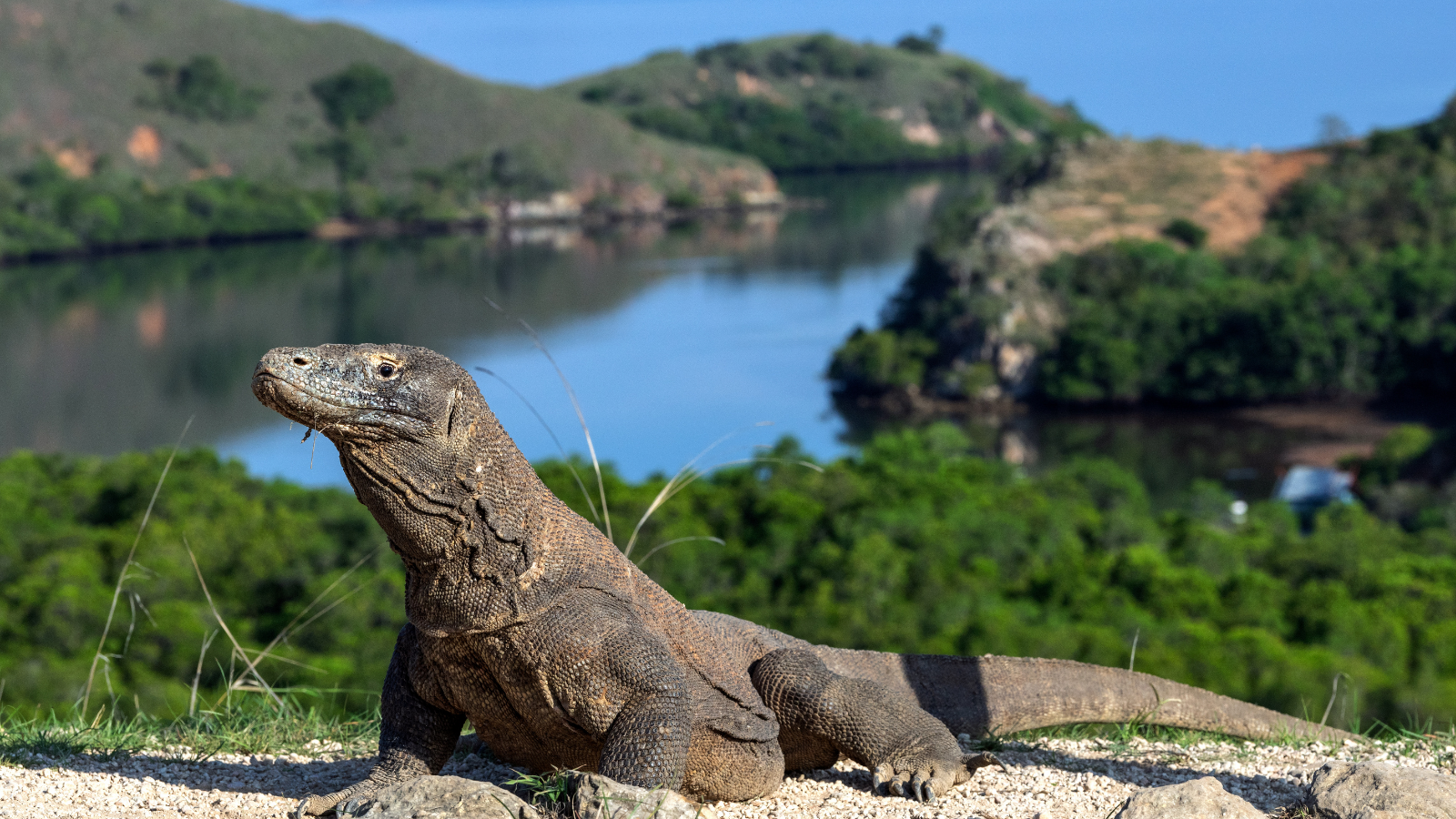
Overview
Komodo Island, located in East Nusa Tenggara, Indonesia, is part of the UNESCO-listed Komodo National Park and is world-renowned as the natural habitat of the Komodo dragon, the largest lizard on Earth. This remote and rugged island, surrounded by turquoise waters and vibrant coral reefs, is a haven for adventure seekers, wildlife enthusiasts, and divers. Komodo Island is one of only a few places in the world where visitors can safely observe these prehistoric creatures up close. For Indian tourists, Komodo offers a rare chance to explore wild landscapes, enjoy pristine beaches, and dive into some of Indonesia’s best marine biodiversity.
Highlights of Komodo Island
- Komodo Dragons – The World’s Largest Lizard
- Description: Komodo dragons are the main attraction on Komodo Island. These massive reptiles, which can reach up to 3 meters in length and weigh over 70 kilograms, are fascinating yet dangerous creatures. Found only on a few islands within Komodo National Park, they are known for their hunting skills and unique biological features.
- Experience:
- Guided Treks: Visitors can take guided treks on Komodo and neighboring Rinca Island to observe the dragons in their natural habitat, learning about their behavior and ecology from trained guides.
- Safety Precautions: Guides are equipped to handle dragon encounters safely. Always follow their instructions, maintain a safe distance, and avoid wearing red, as it can attract the dragons’ attention.
- Tips for Tourists: Wear sturdy footwear, as the treks involve rugged terrain. Avoid sudden movements around the dragons, as they can be unpredictable.
- Pink Beach – A Natural Wonder
- Description: One of the few pink-sand beaches in the world, Pink Beach is located on Komodo Island. Its unique color comes from microscopic red coral particles that mix with the white sand, creating a stunning pink hue.
- Highlights:
- Snorkeling and Diving: The waters around Pink Beach are teeming with marine life and vibrant coral reefs, making it an ideal spot for snorkeling and diving.
- Relaxation and Scenic Beauty: The pink sands against the backdrop of turquoise waters and green hills create a breathtaking setting perfect for photography and relaxation.
- Tips for Tourists: Bring snorkeling gear and underwater cameras to capture the colorful marine life. The beach is best visited in the morning to avoid crowds and enjoy the vibrant pink sands.
- Diving and Snorkeling – Exploring Underwater Biodiversity
- Description: Komodo National Park is celebrated for its world-class dive sites, offering clear waters, rich coral reefs, and abundant marine life. Popular spots include Batu Bolong, Manta Point, and Castle Rock, where divers can encounter manta rays, reef sharks, sea turtles, and a variety of colorful fish.
- Highlights:
- Manta Point: Known for its large population of manta rays, this site offers divers a chance to swim alongside these graceful creatures.
- Castle Rock and Crystal Rock: These spots are famous for their vibrant coral formations and large schools of fish. Strong currents make them ideal for experienced divers.
- Tips for Tourists: Certified divers will find Komodo’s dive sites exhilarating, but beginners can still enjoy snorkeling tours. Be cautious of strong currents, and always dive with a licensed local operator.
- Padar Island – Iconic Viewpoint and Scenic Hiking
- Description: Padar Island, a neighboring island within Komodo National Park, is known for its spectacular viewpoint that offers panoramic views of three distinct-colored beaches: pink, white, and black sand. A short but steep hike leads to the top of Padar Island, where the landscape is one of the most photographed in Indonesia.
- Highlights:
- Iconic Panorama: The viewpoint provides sweeping views of the island’s unique coastlines and rugged hills, perfect for sunrise or sunset photography.
- Hiking Experience: The hike to the viewpoint takes about 20-30 minutes, but the trail is rocky and can be challenging, especially in the midday sun.
- Tips for Tourists: Wear sturdy shoes, bring water, and start the hike early in the morning or late afternoon to avoid the heat. This hike is best suited for those with a moderate fitness level.
- Komodo Village – Cultural Experience with Local Communities
- Description: The village of Komodo, located on Komodo Island, is home to the local fishing community who have coexisted with the Komodo dragons for generations. A visit to the village offers insight into the traditional ways of life, local customs, and Komodo’s unique relationship with its residents.
- Highlights:
- Traditional Fishing: Learn about the village’s unique fishing techniques and watch locals create traditional handicrafts, including Komodo dragon carvings and woven fabrics.
- Cultural Interaction: Visiting Komodo Village allows travelers to experience the local culture firsthand, contributing to sustainable tourism and supporting the community.
- Tips for Tourists: Respect local customs, and consider purchasing handmade crafts to support the village. Always ask permission before taking photos of people or homes.
Activities in Komodo Island
- Wildlife Trekking
- Where: Guided treks on Komodo and Rinca Islands offer close encounters with Komodo dragons and other wildlife like deer, wild boar, and various bird species.
- Tips: Bring plenty of water, wear comfortable shoes, and follow the guide’s instructions closely to ensure safety.
- Snorkeling and Diving
- Where: Dive sites like Batu Bolong, Manta Point, and Pink Beach are ideal for observing vibrant marine life and coral reefs.
- Tips: Use eco-friendly sunscreen to protect the marine environment, and book with reputable dive operators for a safe and enjoyable experience.
- Beach Relaxation and Sunbathing
- Where: Pink Beach and other secluded beaches on Komodo and Padar Islands are perfect for relaxing and unwinding by the sea.
- Tips: Arrive early to avoid crowds, bring sun protection, and enjoy the scenic beauty of Komodo’s unique beaches.
- Hiking and Photography on Padar Island
- Where: Padar Island offers scenic trails with unparalleled views, especially at sunrise and sunset.
- Tips: Capture the panoramic views with a good camera, wear hiking shoes, and be prepared for steep terrain.
Lombok – Bali’s Serene Neighbor:

Overview
Lombok, often referred to as Bali’s quieter and more serene neighbor, is an Indonesian island known for its stunning beaches, rugged mountains, and authentic local culture. For travelers seeking a more relaxed atmosphere away from Bali’s busy tourist spots, Lombok offers a peaceful alternative with natural wonders and unique experiences. Highlights of Lombok include pristine beaches, breathtaking waterfalls, the majestic Mount Rinjani, and the famous Gili Islands. Lombok is ideal for Indian tourists seeking both adventure and relaxation in an untouched paradise.
- Mount Rinjani: Indonesia’s second-highest volcano (3,726 meters) and a landmark in Lombok, ideal for adventure seekers.
- Crater Lake Segara Anak: A stunning lake within the crater, with nearby hot springs for post-hike relaxation.
- Summit Trekking: Challenging but rewarding, offering views of Lombok, the Gili Islands, and Bali.
- Tips: Trekking requires good fitness and proper gear; best done with a guide during the dry season (April to November).
- Gili Islands: A trio of paradise islands off Lombok’s northwest coast, each offering unique experiences.
- Gili Trawangan: Known for vibrant nightlife, beach bars, and live music.
- Gili Meno: The smallest and most tranquil, ideal for honeymooners and those seeking a peaceful retreat.
- Gili Air: Balanced relaxation and social scene, with diving, snorkeling, and beachside cafes.
- Tips: Islands are car-free; best explored by walking, cycling, or horse-drawn carriage (cidomo). Local operators offer snorkeling and diving tours.
- Senggigi Beach: Popular beach on Lombok’s west coast, known for sunsets, calm waters, and beachfront resorts.
- Sunset Views: Offers beautiful sunset views with Mount Agung visible in the distance.
- Water Sports: Great for swimming, snorkeling, and paddleboarding.
- Tips: Variety of accommodations available; book a beachside dinner to enjoy sunset colors over the ocean.
- Kuta Lombok: A relaxed beach town, popular among surfers and backpackers.
- Beaches and Surf Spots: Surrounded by scenic beaches like Tanjung Aan and Selong Belanak, with surf-friendly waves.
- Cafes and Markets: Offers beach bars, cafes, and local markets with handicrafts and local dishes.
- Tips: Selong Belanak is ideal for beginner surfers, with gentle waves and surf schools.
- Tiu Kelep and Sendang Gile Waterfalls: Located in Senaru village, these waterfalls are scenic spots for nature lovers.
- Tiu Kelep: Known for its cascades and natural pool, perfect for a refreshing swim.
- Sendang Gile: Shorter and more accessible, also offers beautiful scenery.
- Tips: Comfortable shoes recommended for jungle paths and river crossings. Local guides available for navigation.
Activities in Lombok
- Trekking and Adventure
- Mount Rinjani: Two to three-day trek with crater lakes and scenic campsites under the stars.
- Senaru Village Tour: Experience local Sasak culture, customs, and traditional lifestyle.
- Snorkeling and Diving
- Gili Islands: Ideal for coral reefs and marine life, with Turtle Point on Gili Trawangan and Meno Wall on Gili Meno.
- Senggigi and Kuta: Both offer clear waters and easy access to reefs for snorkeling.
- Surfing
- Kuta Lombok and Surrounding Beaches: Known for consistent surf; Tanjung Aan and Selong Belanak are popular with surf schools for all levels.
- Cultural Experiences
- Sasak Village Tours: Discover traditional Sasak weaving techniques, architecture, and customs.
- Pottery and Weaving Workshops: Hands-on workshops with locals to learn traditional crafts.
Best Time to Visit Indonesia:
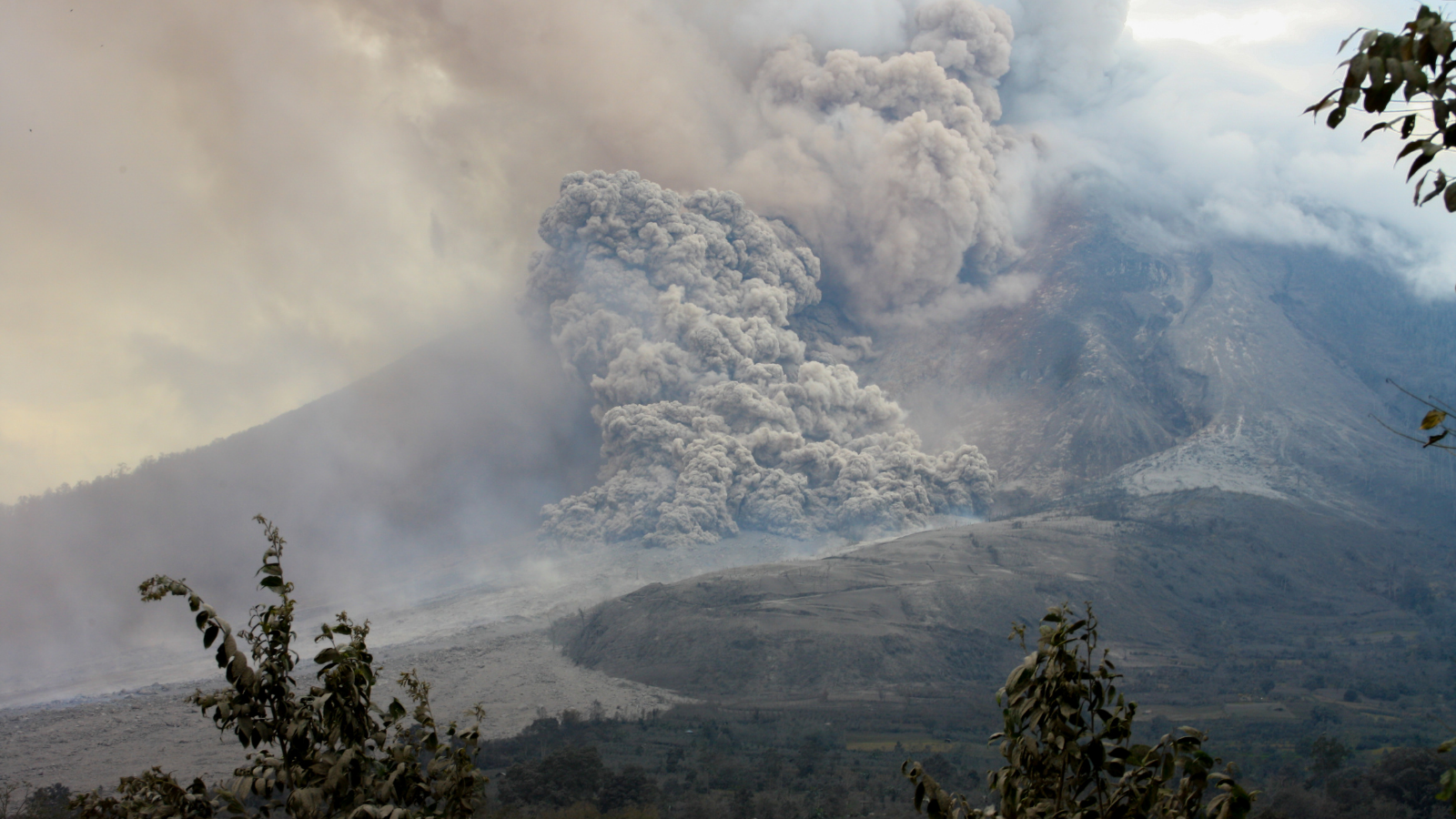
Indonesia’s tropical climate makes it a year-round destination, but understanding the seasonal differences can help you plan the perfect trip based on your activities and destinations of choice. Indonesia has two main seasons: the dry season and the wet season, each offering unique experiences across the country’s vast array of islands.
1. Dry Season (May to September) – Ideal for Outdoor Activities
- Overview: The dry season, from May to September, is generally considered the best time to visit Indonesia. During this period, you’ll experience sunny skies, warm temperatures, and lower humidity, making it ideal for outdoor adventures, beach activities, and sightseeing.
- Temperature Range: 27°C to 33°C (80°F to 91°F) with cooler nights in mountainous areas.
- Ideal Destinations: Bali, Lombok, Komodo, Java, Sumatra, and the Gili Islands.
- Popular Activities:
- Beach and Water Sports: Perfect conditions for surfing, snorkeling, and diving in Bali, Lombok, and the Gili Islands.
- Wildlife Spotting: Ideal for seeing orangutans in Sumatra’s Bukit Lawang and Komodo dragons on Komodo Island.
- Trekking: Best season for hiking Mount Bromo, Mount Rinjani, and other volcanoes without the threat of heavy rain.
- Pros: Clear skies, lower humidity, fewer rain interruptions, and ideal weather for almost all outdoor activities.
- Cons: Peak tourist season from June to August means popular areas can be crowded, especially in Bali and the Gili Islands.
2. Wet Season (October to April) – Lush Landscapes and Fewer Crowds
- Overview: The wet season brings higher humidity, rain showers, and occasional thunderstorms, especially from December to February. The rain usually comes in short, intense bursts, followed by sunshine, so outdoor activities are still possible, but they may be limited.
- Temperature Range: 26°C to 32°C (79°F to 90°F), with humidity around 80%.
- Ideal Destinations: Bali, Java, parts of Sumatra, and urban areas like Jakarta and Yogyakarta, where rain has less impact on sightseeing.
- Popular Activities:
- Cultural Sightseeing: Rainy days are perfect for visiting temples like Borobudur and Prambanan in Java, Uluwatu and Tanah Lot in Bali, and exploring local markets and museums.
- Surfing: Known as the “wet season surfing season” on Bali’s eastern beaches like Nusa Dua and Sanur.
- Scenic Beauty: Rice terraces, waterfalls, and jungles are lush and vibrant, offering excellent photography opportunities.
- Pros: Fewer tourists, lower prices on accommodations, and scenic green landscapes.
- Cons: Some remote areas may become inaccessible due to flooding, and outdoor activities like trekking can be restricted by rain.
3. Shoulder Seasons (April and October) – Balanced Weather and Fewer Crowds
- Overview: April and October mark the transition between the dry and wet seasons. These months offer a balance of good weather, fewer tourists, and vibrant landscapes, making them ideal for travelers seeking mild weather and more personal space.
- Temperature Range: 27°C to 32°C (80°F to 90°F), with moderate humidity.
- Ideal Destinations: All major destinations, including Bali, Java, Komodo, and Sumatra.
- Popular Activities:
- Beach Activities: Warm and sunny days are ideal for beach time, swimming, and water sports in Bali and Lombok.
- Trekking: Mild weather makes it suitable for hiking trails like Mount Rinjani in Lombok and volcanoes in Java.
- Diving and Snorkeling: These months offer clear waters and excellent visibility for diving, especially around Komodo and the Gili Islands.
- Pros: Fewer crowds, mild weather, and lower travel costs.
- Cons: Occasional rain showers, especially toward the end of October, though they are usually brief.
Summary of the Best Time to Visit Indonesia Based on Activities
- Beach Lovers and Water Sports: Dry season (May to September) is perfect for beach activities, surfing, and clear water diving.
- Trekking and Hiking: May to September offers the best conditions for trekking in areas like Mount Bromo, Mount Rinjani, and Ijen Crater.
- Cultural and Historical Sightseeing: October to April, especially in Java and Bali, allows for exploring temples and cultural sites with lush, green landscapes.
- Wildlife Spotting: The dry season (May to September) is ideal for wildlife spotting, as animals are more active with the absence of rain.
Must-Try Experiences in Indonesia:
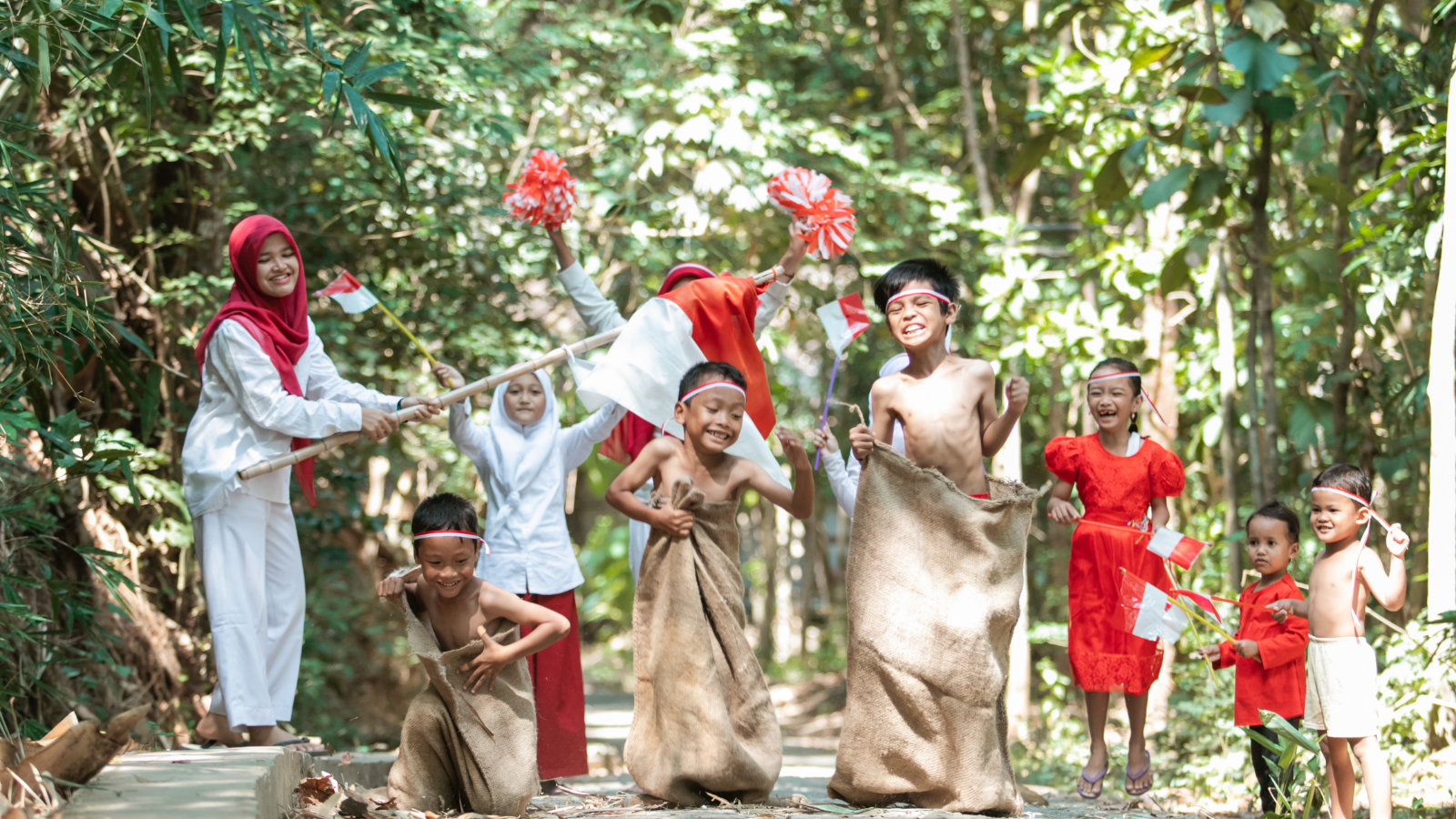
- Temple Exploration: Discover Indonesia’s spiritual heritage with magnificent temples.
- Top Temples:
- Borobudur (Java): Largest Buddhist temple with sunrise views.
- Prambanan (Java): Hindu architecture dedicated to Trimurti gods.
- Uluwatu & Tanah Lot (Bali): Cliffside temples with iconic ocean views.
- Tips: Arrive early, dress modestly, and join a guided tour.
- Top Temples:
- Adventure Activities: Thrilling adventures for adrenaline seekers.
- Popular Activities:
- Volcano Trekking: Mount Bromo, Mount Ijen, and Mount Rinjani.
- Surfing: Uluwatu and Kuta (Bali), Mentawai Islands.
- Diving & Snorkeling: Komodo, Raja Ampat, Gili Islands.
- Tips: Book certified guides and bring appropriate gear.
- Popular Activities:
- Wildlife Encounters: Unique species and endangered wildlife.
- Top Wildlife Experiences:
- Orangutans: Bukit Lawang (Sumatra), Tanjung Puting (Borneo).
- Komodo Dragons: Komodo and Rinca Islands.
- Birdwatching: Birds of Paradise in Raja Ampat.
- Tips: Follow guides closely and choose eco-friendly operators.
- Top Wildlife Experiences:
- Diving and Snorkeling: Explore biodiverse coral reefs in the Coral Triangle.
- Top Dive Sites:
- Raja Ampat: Coral reefs, manta rays.
- Komodo National Park: Sharks, colorful reefs.
- Tulamben (Bali): USS Liberty Shipwreck.
- Tips: Certified divers should bring certification; beginners can join snorkeling tours.
- Top Dive Sites:
- Local Cuisine: Enjoy Indonesia’s rich flavors and diverse dishes.
- Must-Try Dishes:
- Nasi Goreng: Fried rice with sambal.
- Satay: Grilled skewers with peanut sauce.
- Rendang: Spicy beef stew from West Sumatra.
- Gado-Gado: Salad with peanut sauce.
- Martabak: Sweet or savory stuffed pancakes.
- Tips: Try street food in Bali and Yogyakarta; ask for “sedikit pedas” if you prefer less spice.
- Must-Try Dishes:
- Cultural Performances and Traditional Art: Indonesia’s heritage shines through music, dance, and crafts.
- Top Experiences:
- Ramayana Ballet: Ballet and Javanese dance at Prambanan Temple.
- Kecak Dance: Iconic Balinese dance at Uluwatu Temple.
- Wayang Kulit: Shadow puppetry in Java and Bali.
- Tips: Arrive early for good seats and bring a jacket for open-air venues.
- Top Experiences:
- Relaxing on Beautiful Beaches: Indonesia’s beaches offer pristine waters and scenic coastlines.
- Top Beaches:
- Pink Beach (Komodo): Unique pink sand, great for snorkeling.
- Kuta & Seminyak (Bali): Beach clubs, surfing, sunset views.
- Gili Islands (Lombok): White-sand beaches, ideal for snorkeling.
- Tips: Use eco-friendly sunscreen, and make reservations at Bali beach clubs during peak season.
- Top Beaches:
Essential Travel Tips for Indonesia:

1. Best Time to Visit- Dry Season (May to September): Ideal for outdoor activities, beaches, and exploring. The weather is generally sunny and less humid.
- Wet Season (October to April): Rainy but less crowded. Great for lush scenery and budget-friendly travel.
2. Visa and Entry Requirements
- Visa on Arrival: Available for many nationalities, including Indian passport holders, for 30 days. Extensions are possible.
- Travel Insurance: Highly recommended, especially if you’re planning activities like diving or trekking.
3. Currency and Payments
- Indonesian Rupiah (IDR): Carry cash for rural areas and markets; ATMs are widely available in cities.
- Credit Cards: Commonly accepted in tourist areas, but small shops and eateries prefer cash.
4. Language and Communication
- Bahasa Indonesia: The official language, but English is spoken in tourist areas.
- SIM Cards: Affordable with good coverage; major providers include Telkomsel and XL. Available at the airport or local shops.
5. Health and Safety
- Vaccinations: Check with your doctor about recommended vaccines. Carry essential medications, especially if visiting remote areas.
- Food and Water Safety: Drink bottled water, and avoid tap water. Try street food but ensure it’s from a clean and busy stall.
- Emergency Number: Dial 112 for emergencies.
6. Transportation
- Getting Around Cities: Taxis, ride-sharing apps (Grab, Gojek), and scooters are common. Negotiate fares with local taxis.
- Island Hopping: Use ferries, fast boats, or domestic flights for inter-island travel. Book in advance during peak season.
- Renting Scooters: Popular for exploring Bali and Lombok. Ensure you have an international driving permit and wear a helmet.
7. Dress and Etiquette
- Dress Modestly: In temples, villages, and religious sites, cover your shoulders and knees. Sarongs are often provided at temple entrances.
- Respect Local Customs: Remove shoes before entering homes or temples. Show respect by not touching someone’s head, as it is considered sacred.
8. Respect the Environment
- Eco-Friendly Products: Use reef-safe sunscreen to protect coral reefs and avoid single-use plastics.
- Wildlife and Nature: Stick to designated paths in national parks, and avoid disturbing wildlife. Choose eco-friendly tour operators for nature and wildlife tours.
9. Beach and Water Safety
- Currents and Tides: Some beaches, especially in Bali and Lombok, have strong currents. Pay attention to flags and warnings.
- Sun Protection: Indonesia’s sun is strong, so wear sunscreen, sunglasses, and a hat, especially during beach days.
10. Bargaining and Shopping Tips
- Bargaining: Common in markets and smaller shops; start with half the asking price and negotiate politely.
- Souvenirs: Popular items include batik, silver jewelry, coffee, and handicrafts. Make sure products like coral or turtle shells are ethically sourced.
11. Tipping Etiquette
- Restaurants and Services: Tipping is appreciated but not mandatory. Round up bills in cafes and leave a small tip for guides, drivers, and hotel staff for good service.
12. Respecting Wildlife
- Wildlife Encounters: When visiting places like Komodo Island or orangutan sanctuaries, follow guide instructions closely for safety and conservation.
- Avoid Animal Tourism: Choose reputable eco-tour operators that prioritize animal welfare, especially with activities involving elephants, monkeys, or marine life.
Sample 7-Day Itinerary for Exploring Indonesia:
- Day 1: Arrival in Bali – Discover Ubud
- Morning: Arrive at Ngurah Rai Airport, transfer to Ubud.
- Afternoon: Explore Ubud Monkey Forest with its macaques and temples.
- Evening: Stroll through Ubud Art Market, followed by a Balinese dinner.
- Overnight: Ubud
- Day 2: Cultural and Temple Tour in Bali
- Morning: Visit Tegalalang Rice Terraces for scenic views.
- Afternoon: Explore Tirta Empul Temple with holy springs.
- Evening: Head to Uluwatu Temple for ocean views and Kecak Dance at sunset.
- Overnight: Ubud or Kuta
- Day 3: Beach Day in Bali and Transfer to Lombok
- Morning: Relax on Seminyak Beach or Kuta Beach.
- Afternoon: Fly to Lombok.
- Evening: Arrive in Lombok, check in at Senggigi or Kuta, and enjoy a beachside dinner.
- Overnight: Senggigi or Kuta, Lombok
- Day 4: Exploring Lombok – Gili Islands Day Trip
- Morning: Boat trip to Gili Islands (Gili Trawangan, Gili Meno, Gili Air).
- Afternoon: Snorkel around Gili Meno and relax on the beach.
- Evening: Return to Lombok for a seafood dinner.
- Overnight: Senggigi or Kuta, Lombok
- Day 5: Adventure in Lombok – Waterfalls and Traditional Villages
- Morning: Hike to Sendang Gile and Tiu Kelep Waterfalls in Senaru.
- Afternoon: Visit a Sasak Village to learn about local culture and weaving.
- Evening: Relax at the hotel.
- Overnight: Senggigi or Kuta, Lombok
- Day 6: Fly to Komodo and Explore Komodo Island
- Morning: Fly to Labuan Bajo, gateway to Komodo National Park.
- Afternoon: Trek on Komodo Island to see Komodo dragons.
- Evening: Visit Pink Beach for snorkeling.
- Overnight: Labuan Bajo
- Day 7: Island Hopping and Departure
- Morning: Explore Padar Island for a scenic hike; snorkel at Manta Point.
- Afternoon: Return to Labuan Bajo, transfer to airport.
- Evening: Depart or extend stay in Labuan Bajo.
Packing Essentials for Indonesia:

1. Light Clothing
- What to Pack: Choose lightweight, breathable fabrics like cotton or linen, as Indonesia’s tropical climate is often hot and humid.
- Layering for Versatility: Pack light layers, including T-shirts, tank tops, and long-sleeve shirts, which are useful for sun protection.
- Rain Jacket or Poncho: If traveling during the wet season (October to April), bring a compact, waterproof rain jacket or poncho to stay dry during sudden showers.
- Modest Clothing for Temples: When visiting temples or traditional villages, pack clothing that covers your shoulders and knees out of respect for local customs.
2. Swimwear and Beachwear
- What to Pack: Pack a few swimsuits or swim trunks for beach and pool days, and consider bringing a cover-up or sarong for transitioning to beachside cafes.
- Quick-Drying Towel: Bring a microfiber or quick-drying towel that’s lightweight, easy to carry, and perfect for beach days and snorkeling trips.
- Water Shoes: If you plan on exploring coral reefs or rocky beaches, pack water shoes to protect your feet.
3. Comfortable Footwear
- Trekking Shoes or Hiking Boots: If you plan on hiking Mount Bromo, Mount Rinjani, or trekking through rainforests, bring sturdy trekking shoes or hiking boots with good grip.
- Sandals or Flip-Flops: For beach days and casual walks, pack comfortable sandals or flip-flops that are easy to slip on and off, especially in temple areas where shoes are removed.
- Casual Sneakers: A pair of breathable sneakers is great for urban exploration and general sightseeing.
4. Sun Protection and Insect Repellent
- Sunscreen: Bring high SPF, reef-safe sunscreen to protect your skin from the tropical sun and to preserve Indonesia’s coral reefs. Sunscreen can be costly locally, so bring enough for your trip.
- Hat and Sunglasses: A wide-brimmed hat and UV-protection sunglasses are essential for sun protection, especially on beaches and during boat tours.
- Insect Repellent: Mosquitoes are common in Indonesia’s jungles and rural areas. Use a repellent containing DEET or a natural alternative to avoid insect bites, particularly in the evenings.
5. Travel Adapter and Electronics
- Power Adapter: Indonesia uses Type C and F plugs with a voltage of 230V. A universal travel adapter is recommended, especially if you’re coming from countries with different plug types.
- Portable Charger: With so many day trips and excursions, a portable charger is useful for keeping your devices powered, especially if you’re taking photos.
- Waterproof Phone Case: For beach days, snorkeling, and waterfall trips, a waterproof phone case can help protect your phone from water and sand.
- Camera: Indonesia’s landscapes and underwater scenes are picturesque, so bring a good camera, ideally with a waterproof housing or an action camera like a GoPro for underwater shots.
6. Health and Hygiene Essentials
- Basic First Aid Kit: Pack a small kit with essentials like band-aids, antiseptic wipes, pain relievers, and any medications you might need. Include an anti-diarrheal and rehydration salts, as food and water changes can sometimes cause mild issues.
- Reusable Water Bottle: Staying hydrated is key in Indonesia’s warm climate. Bring a reusable water bottle, and look for refill stations or purified water to reduce plastic waste.
- Hand Sanitizer and Wet Wipes: Essential for keeping hands clean on the go, especially when exploring markets, temples, or outdoor activities.
7. Travel Documents and Essentials
- Passport and Visa: Ensure your passport has at least six months of validity. If you need a visa, apply in advance or confirm if you can get a visa on arrival.
- Copies of Important Documents: Bring copies of your passport, travel insurance, and emergency contacts, and store them separately from the originals.
- Small Daypack: For daily outings, a comfortable, waterproof daypack is ideal for carrying essentials like a water bottle, snacks, sunscreen, and souvenirs.
8. Miscellaneous Items
- Reef-Safe Snorkeling Gear: If you plan to snorkel frequently, consider bringing your own mask and snorkel, as rentals can vary in quality.
- Sarong or Lightweight Shawl: A sarong can be used as a cover-up, beach towel, or wrap for temple visits, and it’s a versatile addition to your packing list.
- Ziplock Bags: Useful for storing wet swimsuits, sandy items, or protecting electronics from humidity.
Pack Ziplock bags for storing wet swimsuits, sandy items, or protecting electronics from humidity.
Conclusion
Indonesia’s beauty, culture, and adventure opportunities make it a must-visit destination for travelers from around the world. With a range of stunning islands to explore, from the serenity of Bali and Lombok to the natural wonders of Komodo and Sumatra, there’s something for every type of traveler. Follow this guide to experience the best of Indonesia, whether you’re trekking up a volcano, diving in coral-rich waters, or exploring ancient temples. With diverse attractions and warm hospitality, Indonesia promises an unforgettable journey.






